The Princeton Companion to Mathematics
Original price was: $105,00.$19,99Current price is: $19,99.
- 100% Satisfaction Guaranteed!
- Immediate Digital Delivery
- Download Risk-Free
✔ Digital file type(s): 1𝐏𝐃𝐅
The ultimate mathematics reference book
This is a one-of-a-kind reference for anyone with a serious interest in mathematics. Edited by Timothy Gowers, a recipient of the Fields Medal, it presents nearly two hundred entries—written especially for this book by some of the world’s leading mathematicians—that introduce basic mathematical tools and vocabulary; trace the development of modern mathematics; explain essential terms and concepts; examine core ideas in major areas of mathematics; describe the achievements of scores of famous mathematicians; explore the impact of mathematics on other disciplines such as biology, finance, and music—and much, much more.
Unparalleled in its depth of coverage, The Princeton Companion to Mathematics surveys the most active and exciting branches of pure mathematics. Accessible in style, this is an indispensable resource for undergraduate and graduate students in mathematics as well as for researchers and scholars seeking to understand areas outside their specialties.
- Features nearly 200 entries, organized thematically and written by an international team of distinguished contributors
- Presents major ideas and branches of pure mathematics in a clear, accessible style
- Defines and explains important mathematical concepts, methods, theorems, and open problems
- Introduces the language of mathematics and the goals of mathematical research
- Covers number theory, algebra, analysis, geometry, logic, probability, and more
- Traces the history and development of modern mathematics
- Profiles more than ninety-five mathematicians who influenced those working today
- Explores the influence of mathematics on other disciplines
- Includes bibliographies, cross-references, and a comprehensive index
Contributors include:
Graham Allan, Noga Alon, George Andrews, Tom Archibald, Sir Michael Atiyah, David Aubin, Joan Bagaria, Keith Ball, June Barrow-Green, Alan Beardon, David D. Ben-Zvi, Vitaly Bergelson, Nicholas Bingham, Béla Bollobás, Henk Bos, Bodil Branner, Martin R. Bridson, John P. Burgess, Kevin Buzzard, Peter J. Cameron, Jean-Luc Chabert, Eugenia Cheng, Clifford C. Cocks, Alain Connes, Leo Corry, Wolfgang Coy, Tony Crilly, Serafina Cuomo, Mihalis Dafermos, Partha Dasgupta, Ingrid Daubechies, Joseph W. Dauben, John W. Dawson Jr., Francois de Gandt, Persi Diaconis, Jordan S. Ellenberg, Lawrence C. Evans, Florence Fasanelli, Anita Burdman Feferman, Solomon Feferman, Charles Fefferman, Della Fenster, José Ferreirós, David Fisher, Terry Gannon, A. Gardiner, Charles C. Gillispie, Oded Goldreich, Catherine Goldstein, Fernando Q. Gouvêa, Timothy Gowers, Andrew Granville, Ivor Grattan-Guinness, Jeremy Gray, Ben Green, Ian Grojnowski, Niccolò Guicciardini, Michael Harris, Ulf Hashagen, Nigel Higson, Andrew Hodges, F. E. A. Johnson, Mark Joshi, Kiran S. Kedlaya, Frank Kelly, Sergiu Klainerman, Jon Kleinberg, Israel Kleiner, Jacek Klinowski, Eberhard Knobloch, János Kollár, T. W. Körner, Michael Krivelevich, Peter D. Lax, Imre Leader, Jean-François Le Gall, W. B. R. Lickorish, Martin W. Liebeck, Jesper Lützen, Des MacHale, Alan L. Mackay, Shahn Majid, Lech Maligranda, David Marker, Jean Mawhin, Barry Mazur, Dusa McDuff, Colin McLarty, Bojan Mohar, Peter M. Neumann, Catherine Nolan, James Norris, Brian Osserman, Richard S. Palais, Marco Panza, Karen Hunger Parshall, Gabriel P. Paternain, Jeanne Peiffer, Carl Pomerance, Helmut Pulte, Bruce Reed, Michael C. Reed, Adrian Rice, Eleanor Robson, Igor Rodnianski, John Roe, Mark Ronan, Edward Sandifer, Tilman Sauer, Norbert Schappacher, Andrzej Schinzel, Erhard Scholz, Reinhard Siegmund-Schultze, Gordon Slade, David J. Spiegelhalter, Jacqueline Stedall, Arild Stubhaug, Madhu Sudan, Terence Tao, Jamie Tappenden, C. H. Taubes, Rüdiger Thiele, Burt Totaro, Lloyd N. Trefethen, Dirk van Dalen, Richard Weber, Dominic Welsh, Avi Wigderson, Herbert Wilf, David Wilkins, B. Yandell, Eric Zaslow, and Doron Zeilberger
91 reviews for The Princeton Companion to Mathematics
You must be logged in to post a review.

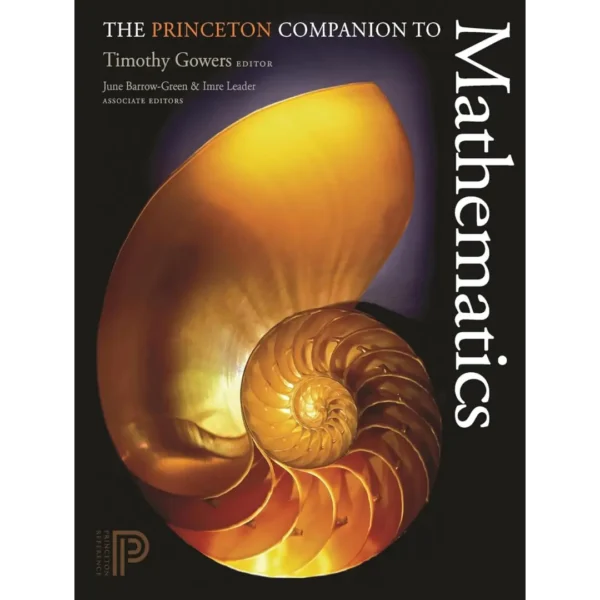
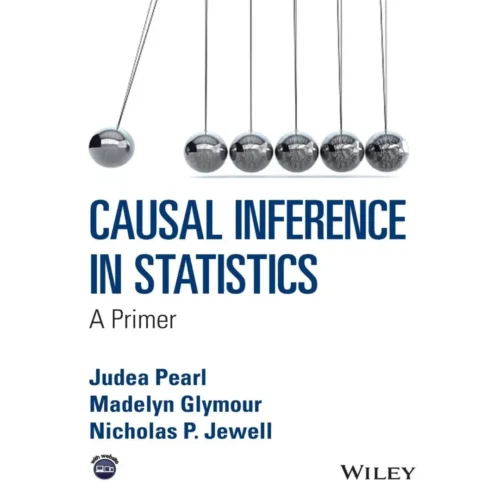
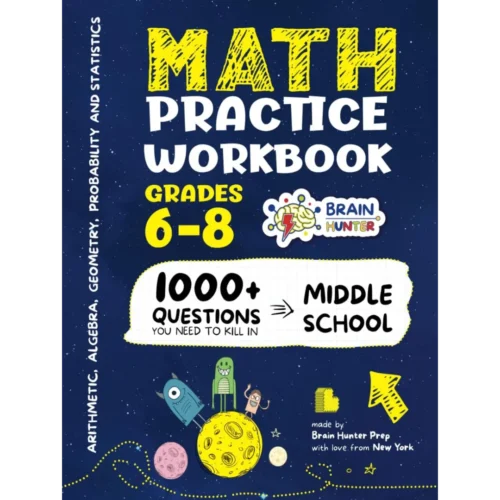
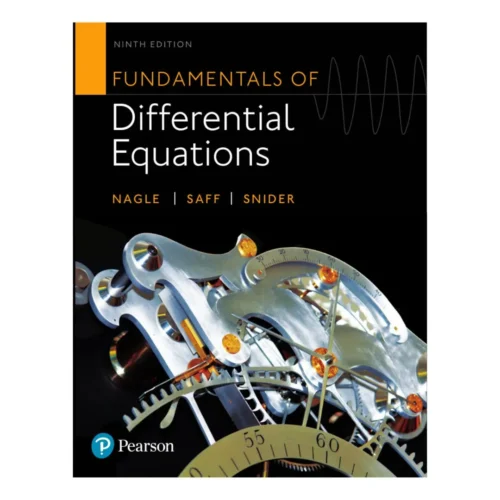
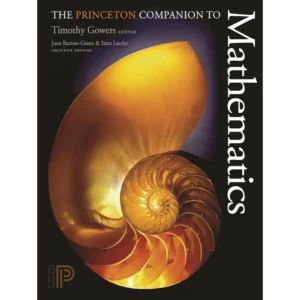
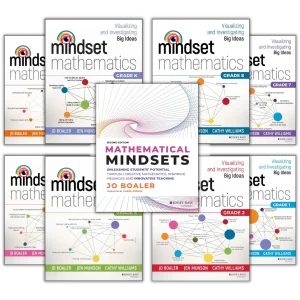
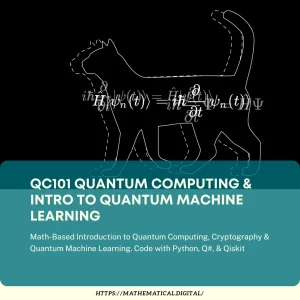
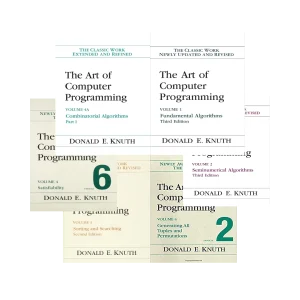
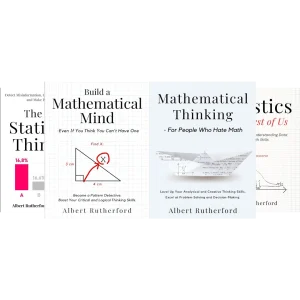
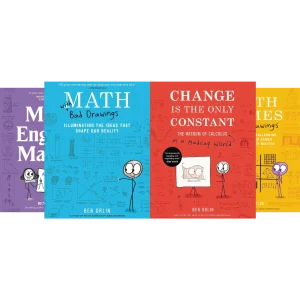
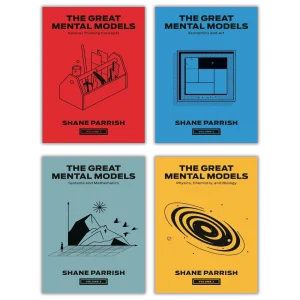
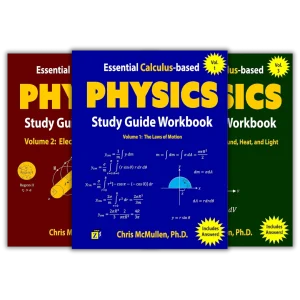

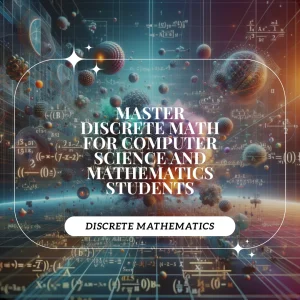
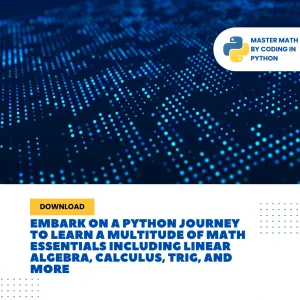
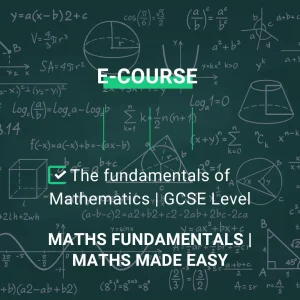
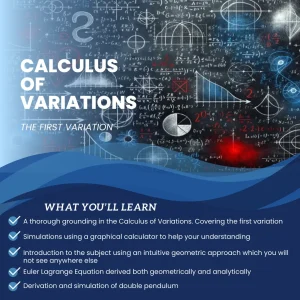
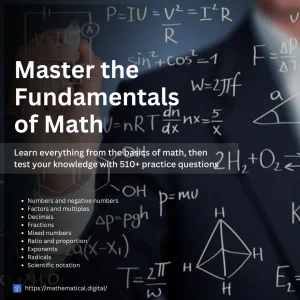

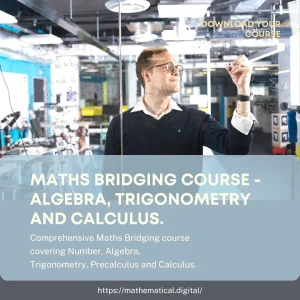
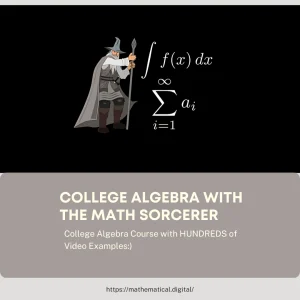
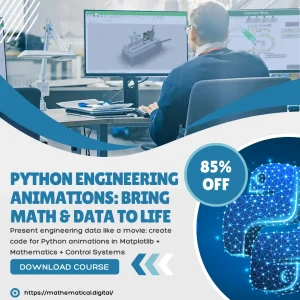
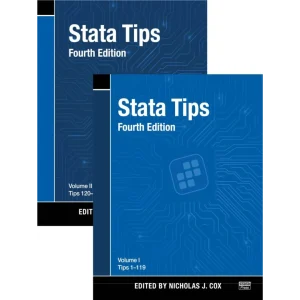
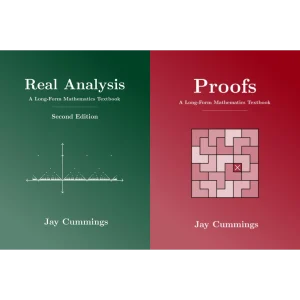
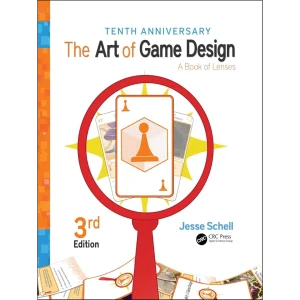
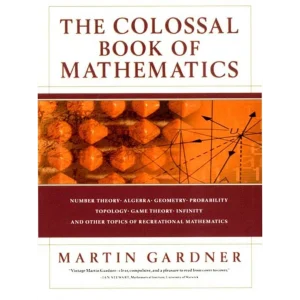
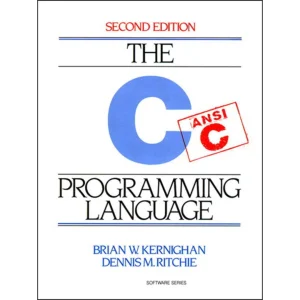
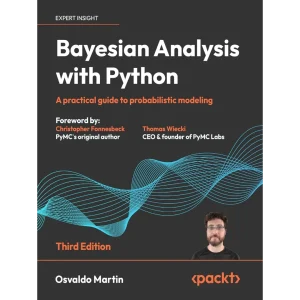
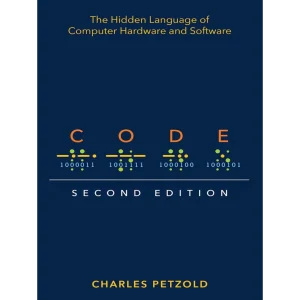
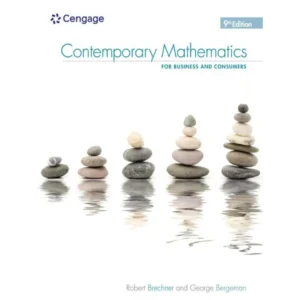
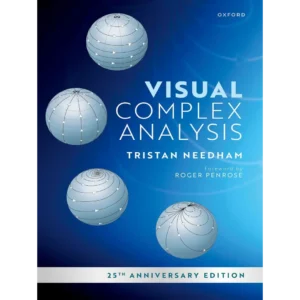
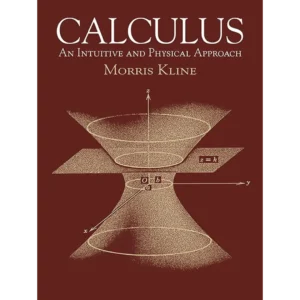
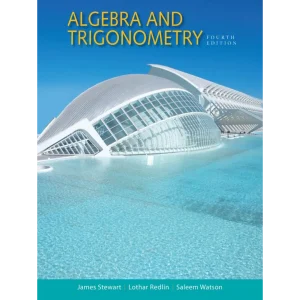
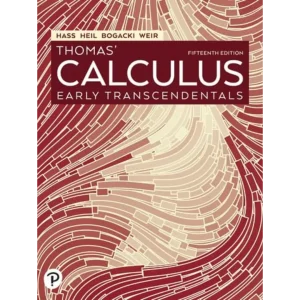
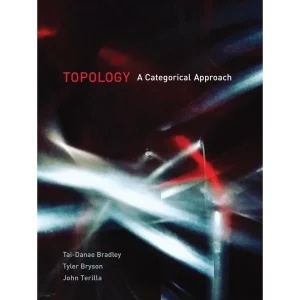
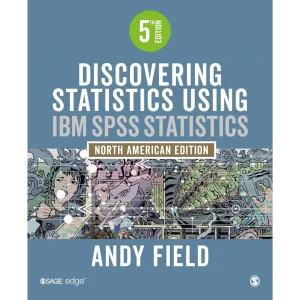
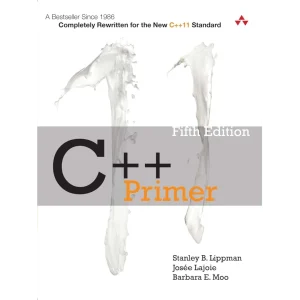
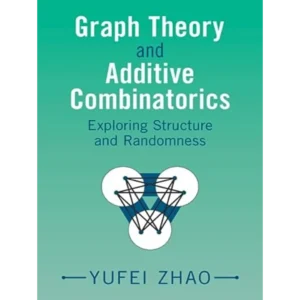
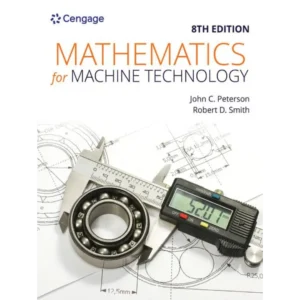
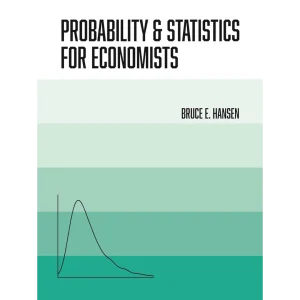
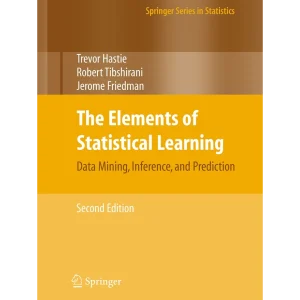
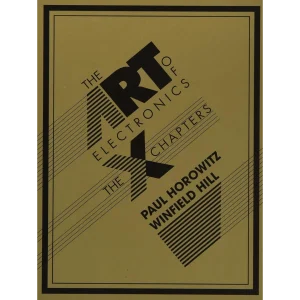
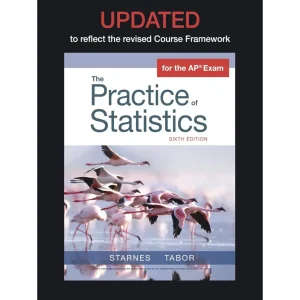
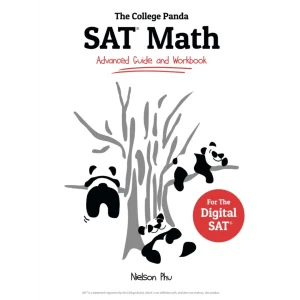
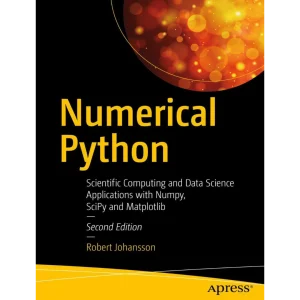
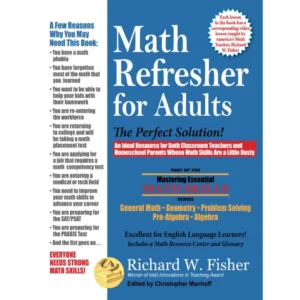
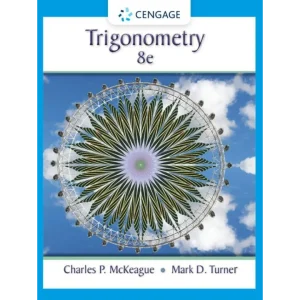
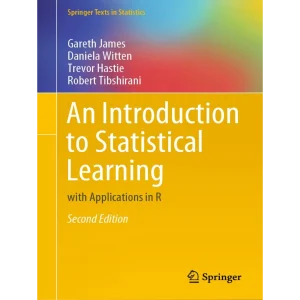

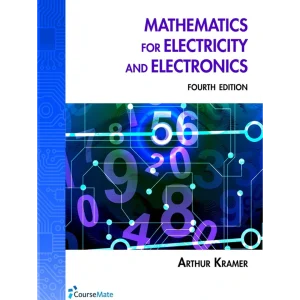
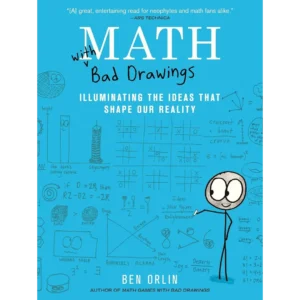
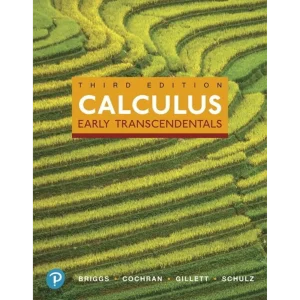
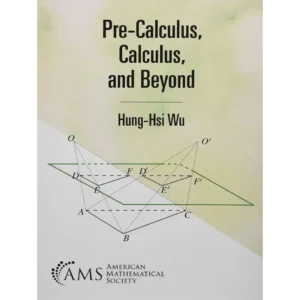
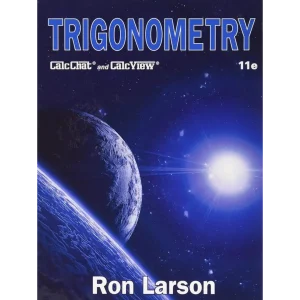
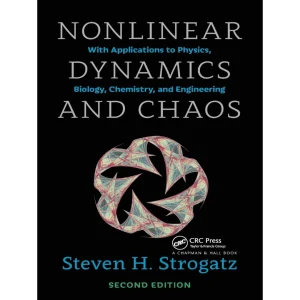
Julio Cesar De Yncera –
I learned about this book while I was reading a blog post on Timothy Gower’s first blog post.
I have read quite a bit and I think is a wonderful book. While it does lack a lot of detail. It does excel at giving a general view at what mathematics is all about.
If you ever wonder
What is mathematics?
or what do mathematicians do. This book is a good start. The book is a compilation of essays in different topics in mathematics many written by first class mathematicians including Timothy Gowers and Terence Tao both recipient of the Fields Medal in mathematics the equivalent to the Nobel prize and many others.
I believe the book should be part of any mathematicians or aspiring mathematician library.
The book covers mathematical history and also mathematics itself. Great parts of the book could be read by high school students but for some other parts is necesary to have at least and undergrad degree to be able to understand it. I wonder if a new Ramanujan found this book if he will be able to reivent the whole of mathematics from this book?
Someone asked in Prof. Gower’s Blog What knowlege prerequisites are required to be able to profit from this book and what follows is part of the answer that professor Gower’s gives and I believe it could be also very useful to others considering buying this book.
“That’s a good question and one that doesn’t have a straightforward answer. When we started out on the book, we hoped to have a more or less uniform level of difficulty throughout. But it fairly soon became clear that that was not practical, since some parts of mathematics are much harder to explain than others, so we modified our goal to one of trying to explain everything as accessibly as possible (and ideally more accessibly than one could easily find elsewhere), even if that level of accessibility varied from article to article.
The result? I would say that if you have done high-school mathematics and were good at it, then you will understand at least some of the book, enough to make it worth reading if you have a genuine interest in the subject, a wish to learn more, and a willingness to think quite hard as you read. If you are taking university courses in the subject, then the proportion you will understand will be much higher: some parts will be heavy going, but other parts will give you very useful insights into the concepts that are being thrown at you all the time. And if you are a graduate student or professional mathematician, then the book will be a very helpful resource if you are interested in getting at least some understanding of parts of mathematics that are not your own speciality.”
My simplest advice is
If you love mathematics or like mathematics this is a book to get and treasure!
Nim Sudo –
Take Gowers’s delightful little book, “Mathematics: a very short introduction”, make it about twenty times as long, bring in a host of excellent contributors to write specialized articles, put the whole thing together very nicely, and you have the present book.
This book is not an encyclopedia, but it does offer a sweeping panorama of mathematics, written at an accessible level. It includes introductory articles on what mathematics is and basic concepts, more advanced (but still accessible) articles introducing various key concepts and areas of mathematics, articles on history of mathematics and biographies of mathematicians, descriptions of key theorems and problems, essays on the applications of mathematics, and more. There is something in here for everyone with an interest in mathematics.
As a professional mathematician, I am familiar with most of the introductory material, but I still like seeing it so nicely expressed and might use it as a teaching resource. Among the more advanced articles, there is lots of material which I feel like I “should” know, but actually don’t.
The editors did an amazing job of finding really top-level people to write the specialized articles, who are both renowned experts in their areas and excellent expositors. The quality of the writing is infinitely superior to most articles in wikipedia or other online math encylopedias.
As I said, this not a comprehensive reference. The articles are introductory and designed for “bedtime reading”. (Although if you read this book in bed you will probably have to sit up and put it on your lap because it is as big as a phone book.)
Anyway, I was very pleasantly surprised when I received this book. I expect to spend lots of time in the next few months browsing through it to brush up on my basic mathematical literacy. I think it will be even more useful for undergraduate mathematics students who want a good overview of what mathematics is about.
UPDATE: There is a useful page of errata, and discussion thereof, on Gowers’s weblog.
Timothy Chow –
The Princeton Companion to Mathematics is such an extraordinary book that I am still amazed that the chief editor, Timothy Gowers, managed to pull it off. The renowned mathematician Doron Zeilberger announced that if he could take only one book with him to a desert island, it would be the Princeton Companion to Mathematics.
Why such high praise? Simply put, the PCM gives a single-volume overview of all of pure mathematics, with a clarity and coherence that cannot be found anywhere else. To be sure, there do exist several good books on the history of mathematics that give a good overview of elementary mathematics and introduce the reader to some of the great mathematicians of the past. There also exist excellent “popular science” books by writers such as Martin Gardner and Ian Stewart, that explain selected topics in advanced mathematics to the lay reader in an engaging and clear manner. And there are also encyclopedias (including Wikipedia) that delineate the main branches of mathematics and give succinct definitions of all the main concepts. But only the PCM does all of these things at once, in only a thousand pages.
The PCM is all things to all people. If your mathematical background is limited, you can still learn a great deal from the more elementary sections of the book, as well as from the biographical sketches of nearly a hundred famous mathematicians of the past. At the other end of the scale, even professional mathematicians will learn something from the articles on branches of mathematics other than their own specialty. Gowers made a systematic effort to find contributors who are not only world experts in their subject, but who write extremely well. He also forced the contributors to write in as accessible and elementary a manner as possible. The result is that even highly abstruse areas of mathematics are explained here with a clarity that is difficult to find anywhere else in the mathematical literature. The PCM is thus especially valuable to mathematics majors and graduate students.
Despite the ambitious scope of the book, it retains a strong sense of unity and coherence, by consistently emphasizing the forest rather than the trees. It also gives the reader a holistic view of mathematics by devoting different sections of the book to different perspectives on the subject. For example, one section organizes mathematics by sub-discipline, while another section highlights the main results and open problems of mathematics, while yet another section picks out the most important concepts. By putting all these aspects together in one volume, the PCM gives the reader a bird’s-eye view of the whole subject that is not available from Wikipedia or from a shelf full of popular books on disparate topics.
The PCM is so well-written that it can be read either cover-to-cover, or browsed at random, or consulted as a reference when needed.
One word of warning: As Gowers himself notes, the book would be more accurately titled, “The Princeton Companion to Pure Mathematics.” While applications of mathematics to other fields are touched on briefly, Gowers consciously limited the book primarily to pure mathematics, in order to keep the scope of the book manageable.
Should you still have doubts about the book, you can browse parts of the book for free: Selections from the book may be found at the book’s official website, and many of the contributing mathematicians have posted their own sections on their own websites (you can find these easily using Google). And for more reviews of the book, see Gowers’s blog.
Tom M. Grimes –
This book has a lot of information concerning mathematics, both of a historical and a practical nature. Everyone can learn something from reading the book.
CorMag –
Camber –
The other reviewers who gave this book 5 stars are on the mark, and I’m frankly amazed that anyone would give it less than 5 stars.
Sure, the book may not be “perfect” according to the varying criteria and preferences of everyone on earth, but I think it comes about as close as humanly possible. The breadth and overall quality of this book are simply astounding. I can’t remember the last time I was this excited about a book, and I totally understand another reviewer’s fantasy about being stranded on an island with the book.
As far as the level of the book, there’s something here for everyone genuinely interested in mathematics. Even many high school students and general readers will find much they can understand, though I do think it would be preferable to have at least taken calculus, and maybe also some linear algebra.
General readers will find themselves drawn deeper and deeper into the book as it provides wonderful paths to discover the beauty and power of mathematics, and the experience will be far more satisfying than reading popular mathematics books which nervously avoid mathematical notation and formulas (
Mathematics: A Very Short Introduction
and
50 Mathematical Ideas You Really Need to Know
are excellent warmups for this book). And advanced readers will also find plenty of articles pitched at a fairly high level, and will thereby be able to extend their knowledge into areas which are less familiar, thus allowing adventure beyond the confines of their specializations.
Regarding the ~$70 price, this book is an utter bargain. Keep in mind that this is a hardback of about 1,000 pages, and its vast content compares with 10+ typical math books, so you’re saving a bundle, plus you get the convenience of having all of this scope within the covers of a single carefully-integrated book.
Needless to say, this book comes with my highest possible recommendation.
Given what has been achieved with this book, now I just hope that Princeton Companions of this quality will be developed for other subject areas such as applied math, physics, chemistry, biology, philosophy, etc.
Robert Spalek –
This is an amazing book for anyone seriously interested in mathematics. I’ve been reading it over the past few months, very slowly, because it deserves so. I’m interested in research and this book helps me to see connections between fields and find results and techniques of possible use for me. Most chapters are written extremely well and they go into just the right depth so that I can still understand them, while being interesting.
J. Koelman –
Curtis R. Thacker –
For those interested in mathematics or for those who wish to learn more about mathematics, especially mathematics that have challenged even the most talented mathematicians over the years, this is the best book I have ever encountered. Be fore-warned, however, this is a heavy book, both physically and intellectually. If you were not an “A” math student and have not taken calculus, it would be better to check this book out of the library, rather than buy it.
Petel –
I love math, and love testing out mathematical ideas and concepts using computers. The book has already given me hours of enjoyment. I pick up on a topic, explore it a bit, write a script and test it out. I’m not a mathematician by training (my background is engineering) but I do have a strong inclination to math. This book together with Numerical Recepies are my favourite two math books.
Ideas and concepts are presented in an an excellent manner. Some of the topics are over my head but I believe in setting the bar a little high and letting people try an reach it.
And when I don’t want to scribble equations and expressions on paper, or program, I turn to the history and biographies of the great mathematicians and their impact on math and science.
Jörg B –
Princeton Companion to Mathematics ist ein wirklich gut geschriebenes Buch der reinen Mathematik. Dies Buch gibt eine sehr klare Übersicht über aktuelle Forschungszweige der reinen Mathematik. Das Buch setzt unterschiedliche Schwerpunkte: Diejenigen, die eher die historischen Daten interessieren, werden im Kapitel 6 Informationen zu vielen großen Mathematikern finden. Andere möchten vielleicht nur einen Überblick über Zweige der Mathematik gewinnen. In diesem Buch werden zunächst die wesentlichen Konzepte der Mathematik in verständlicher Sprache vermittelt. Dann werden einige Gebiete näher beleuchtet, unter anderem werden auch Fragen angeschnitten, die in der theoretischen Physik (Stringtheorie, Quantengravitation) sehr viel Aufmerksamkeit erhalten.
Das Buch enthält also sowohl einführende, als auch mehr fortgeschrittenen
Abschnitte, ist aber nie langweilig. Die Autoren sind sehr hochkarätige Mathematiker. Interessant ist auch neue Sichten aus den Blickwinkeln der Autoren zu gewinnen.
Es ist nicht zu unterschätzen, wenn man Mathematik von den Leuten erfährt, die diese Bereiche auch wesentlich vorantreiben.
Dabei bleibt der Text immer erstaunlich verständlich.
Mohan S. Shrikhande –
It’s an outstanding standing addition to the the field of mathematics. It should be of great interest to professional and amateur mathematicians,scholars, or anyone who is interested in mathematics. Individual chapters are written by world renowned experts in the field. If you want to learn of some of the various topics, famous problems, conjectures, new developments, history of mathematics, and about famouus mathematicians, etc. this is The Source to look at.
Daniele Bianchi –
I’m not a specialist in the field and I find this grand overview of contemporary mathematics fascinating. The topics range from accessible to intricate and sometimes obscure for the non-specialist. Nonetheless the authors – themselves specialists in the respective fields – manage to engage the reader through a balance between detail and anecdote, cross references, and historical prospective. The book list of topic is vast and comprehensive, although the coverage, by nature, not exhaustive (further readings are always suggested in bibliographic notes). I was pleasantly surprised by finding essays on the mathematics of music, chemistry, biology and economics, as well as biographic notes on the major mathematicians of history.
Overall it makes an outstanding addition to the library of anyone interested in mathematics and its history.
Vullierme –
The Princeton Companion to mathematics is certainly one of the most important texts ever written in the very large field of the one concerning introduction to mathematics.
It is not an illusion to believe that even the most complex concepts of mathematics , for example algebraic topology or analytic number theory , are accessible by anybody who has at the most, acquired the elementary mathematical knowledge taught in high school.
Actually, it is the fact that all the papers collected in the book are written by the most influential mathematicians in the world that makes it possible.
The utterly clear writing style of the authors also give a very attractive and agreable aspect to the book.
The Companion is not only a collection of detailed introductions to concepts , but also a very useful tool (particularily because a very large part of the book is used to the study of the cultural aspect of mathematics , through biographies and sometimes very deep epistemological analysis of various concepts).
The work is then way more important than a simple overview of the global today’s knowledge (as an random encyloapedia or a random work of vulgarisation) , but rather a work on general mathematics and everything related to it (applied mathematics , philosophy etc…).
Of course , I warmly recommand the PCM to anybody interested into mathematics , or more generally in “hard sciences” .
For my part , I enjoyed a passionating and unique odyssea into the universe of mathematics , and it really helped me when studying .
It is after all , the best companion you can always rely on.
Enjoy
A simple look to the panel of the contributors should convince .
Robert E. Weiblen –
the errata need to be consolidated; now they are on two or more blogs of the editor’s
jesus !
Dan –
Goutam –
This is the second copy of the book I purchase. The first one was for me and my son. This one is a gift for a friend of my son, a high school student, with a hope that it will remain her companion for many years. This clearly indicates how I rate the book. In my currency (rupee) the price is at the higher side. But I do not complain much. It is worth buying this magnum opus. It has wide coverage in a mostly understandable form. I really enjoy reading. I cannot compare it with Timothy Gowers earlier text, Mathematics: a short Introduction. I do not have a copy. But then I believe that they cannot be compared simply because of difference in sizes. I do not have anything similar to PMC in my collection. It is just great.
Fredrik Meyer –
This is a huge collection of essays and mathematical knowledge. The book is not an encyclopedia, but rather a “companion” in the human sense of the word. It knows some of (almost) everything. Worth to mention are the essays at the end titled “Advice to a young mathematician”, which really inspired me in my mathematics studies. A must-have for every student of mathematics 🙂
Willy Van den Driessche –
This book is huge and it only scratches the surfaces of most of its topics. There is enough material to give you a teste of the fruit though. We writing style is very readable and I definitely recommend it. Beware that you bookshelf should be large enough.
The physical book is also high quality material.
Blunderbuss23 –
It’s hard to come up with anything to add to the excellent reviews everyone else has already written. I honestly can’t imagine anyone with more than a passing interest in higher mathematics who wouldn’t love this book, and I’m the kind of guy who falls asleep as soon as Euclid gets past his undefined terms. Ladies: Is there a mathematician or wannabe mathematician in your life? Buy him this book, and he’ll be your love slave forever.
Ali Civril –
This companion is one of a kind in breadth and it is reasonably deep, at least deeper than what most of us would expect. Given the enormous size, it is also exceptionally well organized and written. Gowers, besides being a Fields medal winner, is also an original teacher and quite fortunately, has been motivated to come up with such a project.
The introduction talks about how the project evolved, what mathematics is all about and some very fundamental mathematical definitions prevalent in all areas. Then comes other mathematical definitions, main branches of mathematics, main theorems, impact of mathematics in other fields, biographies of famous mathematicians, and expository articles. It is not a dry read by any means, containing remarkable pedagogical features and a multitude of opinions.
Each section, written by an expert, starts by either outlining an intuition on how the subject evolved, or -although not necessary in formal mathematics- what sort of inspiration and analogy can be drawn from nature, or rather by posing a simple motivating question before mildly formalizing things.
If you have an undergrad degree in sciences with reasonable formal math education, or even a high school degree with a curious mind, this book will make you familiarize with modern concepts in mathematics, if not the sophisticated tools utilized.
Finally, this book is more than the sum of its parts and can possibly build some sort of emotional tie with its owner. I suggest everyone with a math instinct to get a copy.
Kittipong Tripetch –
The book has very detailed about history of the mathematicians. But too few about latest problem in mathematics
Muadga –
I bought this book as a birthday present for my husband who is a mathematician. He loved it! The book has several parts (and within each part several short ‘articles’): origin of modern mathematics, math concepts and definitions, branches of math, theorems and problems, biographies of famous mathematicians and a final section on the influence of mathematics.
The ‘articles’ are written by math experts in each of the subjects and written fairly simply so anyone with some background in math can understand them. This is not a reference book by any means, rather a ‘light’ reading for someone who is really interested in math.
Neal J. King –
This enormous book covers the world of mathematics authoritatively and deeply: Different sections are written by experts in the specific area. Nonetheless, each section is reasonably comprehensible.
It would be unreasonable to try to read through the entire book end-to-end, although you could do that if you have nothing else to do for a year. However, if you like reading and thinking about mathematical ideas, this book will be a great place to get up-to-speed on any topic you may stumble across. Each section also has suggestions for further reading, so you can keep going beyond what has been included in the book.
If you enjoy mathematics beyond the recreational level, this book deserves a place in your personal library.
Nicholas A. Fortis –
Very briefly: This volume is about as complete a compendium of things mathematical as one will currently see. But it is for the expert, the man or woman who is versed in (pure!) mathematics. It is completely over the head and beyond persons like me who have some knowledge of applied math or accounting or business math. I therefor advise anyone who is like me to save a bunch of cash and, if interested in math, buy instead some popular exposition written for the likes of us.
J. Bohannon –
When I run across a mathematical term or topic that I don’t understand, my first stop typically is Wikipedia, sometimes Wolfram Mathworld. But the articles there don’t always contain the best writing for my interest. For example, I may be left wondering what a “sheaf” is really all about. What was the motivation to create it? What is the true essence of it? I can follow the hyperlinks in Wikipedia and learn that the “elephant has a trunk” from one article and that it has a tail from another article and yet another article may talk about the legs. But I may still not really get it: What is the “elephant” (or sheaf or Teichmüller space or…) really all about? Wikipedia can sometimes be too fragmented and, ironically, too technical. It tries to be accurate and detailed and founded on authoritative references but it isn’t always the best source to get the intuition about something, at least for mathematical topics.
Some might say you should make the investment and get a book on the topic you want to know more deeply. Yes, I could buy a book about algebraic geometry. Indeed, I did. But, typically, a book requires a pretty big investment of time and focus to work through. And, without the intuition up front, it isn’t clear that the payoff at the end will be worth it.
The Princeton Companion fills the gap. The focus is on providing a “feel” for topics ranging from elementary to very advanced: motivations, simple examples, intuitive exposition. There is not an emphasis on proofs or completeness. One aspect I really like is that for any particular topic at random, it typically contains the full range of the topic (from simple to advanced), so that no matter what your current understanding is, you can find a place within the narrative to connect with the material and then go from there. The authors seem to have taken the view of extreme editing, leaving out as much as they can, so that what they leave in is a kind of distillation of the essence of each topic. What is left is fairly well integrated. As a result, reading it is like being on a grand tour of mathematics: You get to sample the best restaurants, see the most beautiful art, wander the nicest shops, without having to commit to living there full-time.
rbnn –
A superb and fascinating collection of articles on mathematics topics, somehow retaining clarity for the interested layman, to the student, to the professional. An absolute necessity for anyone studying math as well.
Everything about this book is great. The writing quality is remarkably high. The production quality is excellent. There is a sampling of interesting stuff in the articles for everyone.
I really, really wish I had had a book like this in college. One can get a clearer picture of some fields just by reading its three-page summaries than by taking a whole course in many cases.
Not sure what else to say, just that the book is wonderful.
Bill –
this is exactly the book i was looking for.
rodrigo –
I was a math major in college, I’ve never read a math book that explained concepts in the readable way this book does. It’s essential for self-study. If you’re reading other books on math, this is one to keep handy. You’ll get a lot more from other books on math if you’ve read through the relevant parts of this book
Duncan Badenius –
First, it seems we cannot get rid of that dated and ambiguous subset sign, the one with the redundant underlining due to Felix Hausdorff. Mathematicians are split on this matter, partly out of respect for Hausdorff no doubt, who wrote the first definitive treatise on Set Theory. The author/editors had the opportunity of using the modern non-underlined sign instead which is inclusive of sets that are not so-called “proper” subsets. (Hausdorff’s use of the simpler sign restricted its use to proper subsets alone.) Important users of the newer non-underlined subset symbol include Bourbaki, Burkhill, Dieudonne, Godement, Halmos, Jacobson, Kelley, Lang, etc, and my late mentor Howard Levi. Secondly, Bertrand Russell’s tutor at Cambridge University, later collaborator in creating their monumental “Principia Mathematica,” Alfred North Whitehead, is missing from PCM’s Part IV: Mathematicians (biographies) who himself did both “pure” and “applied” mathematics, including an alternative relativity theory. The companion to his popular “Science and the Modern World” was his less popular yet uniquely admirable “An Introduction to Mathematics” from which I first learned what the terms “continuity” and “limit” really meant, as rigorously defined in that book. Mortimer J. Adler (of “How to Read a Book” renown) succinctly described it as a “little gem” which indeed it is. Whitehead’s later eminence in philosophy only enhances his purely mathematical accomplishments. Finally, aside from these two strongly recommended Whitehead books (for beginners) prior to reading the PCM, I would also recommend the following books to be read conjointly with it, from beginning levels to the mathematically serious more advanced levels: Howard Levi, “Elements of Algebra,” Fourth Edition, AMS/Chelsea; Bertrand Russell, “Introduction to Mathematical Philosophy,” Routledge 1993; and Saunders Mac Lane, “Mathematics Form and Function,” Springer-Verlag 1986, which nicely complements the PCM itself for mathematically mature readers. [revised/updated July 27, 2011]
B. Dargan –
This is a book I wish my family owned when I was in high school!!
It describes how the various branches of mathematics relate. With progressive levels of detail and complexity.
If that isn’t enough, a good set of references can give you more detail.
I picked this up along with
Journey Through Genius: The Great Theorems of Mathematics by William Dunham | Summary & Study Guide
.
Which argues for teaching Maths similar to how we teach Arts right now.
By studying the masters. Much more interesting than the current teaching methods.
J. W. Camp Jr. –
Excellent book, excellent service!!!! If you are REALLY interested in mathematics, including specific mathematicians, formulas, problem approaches,and the difficult concepts that only mathematics can explain, this is the book for you. For a high school or college student studying math, physics, electronics or other similar disciplines, this is a GREAT reference book to own!!!!
matt –
Great sent, I received the book in a record time, I thought I would have receveied it in November, no, I received it in october. The book was like new
a reader –
First an advice: please read the Editorial reviews, for no review from a single reader is likely to do better than the former taken collectively. Having said that, I feel that I might have more freedom to confine myself to a totally personal and partial viewpoint in what follows. Moreover, my account here is mainly intended towards those contemplating a career in Mathematics, although it might be also of some use to others.
K.J.Devlin once said in a review that when T.Jech’s “Set Theory” first came out in 1978, the graduate logic students went without food in order to buy it. I didn’t know whether Devlin’s statement was justified, but I did follow his advice to buy it in my graduate years – fortunately still with something to eat after the spending. In the case of the Princeton Companion, I would have no hesitation to buy it even if it meant that I had to starve. And I recommend a budding mathematician to do the same, if necessary.
Why is the Companion so highly recommended? It is mainly because of the increasingly extreme specialization taking place within today’s Mathematics (and other sciences, perhaps to a lesser extent). People often complain that they don’t know what the mathematicians are doing. Yet it will be more embarrassing if the mathematicians themselves also admit that they don’t know much about Mathematics either. For it seems fair to say that today an average PhD candidate in Math will be familiar with less than 1% of the topics under investigation by their colleagues. To make the word “familiar” more definite in this context, I will adopt the following rough, working definition:
Suppose you are able to get access to any graduate course or seminar in any university in the world. Now randomly go to any such course/seminar. If you become able to follow and participate in their discussions after one month’s study and struggle, then I will count you as “familiar” with that course/seminar topic. And my claim is that the probability for an average PhD candidate to get lost in the math topics currently under study will be more than 99%.
Here I will give no discussion on how my claim is to be justified or whether – if it is true – any mathematician should worry about it at all – if all that is desired is to stay in one’s chosen niches of specialization and continue producing specialized articles and books to survive the fierce academic competition. To some extent the over-specialization is indeed inevitable, due to the vast explosion of human knowledge during the last 100 years. But if you are unhappy with your own unfamiliarity with Math and want to do something about it, then as far as I know this Companion will be your best aid.
As I have said, I heartily agree with most of the Editorial reviews and they will already give you a fair assessment of the content of the Companion. There is no point to repeat their remarks. As for my own perceptions, I am most surprised to discover that the Companion provides so many surprises. First of all, I am surprised by its readability and accessibility. I bet that even an undergraduate student can have a fair share of the gems contained therein. So far I have joyfully read about one-tenth of this tome, in spite of my previous ignorance of 99% of its content. I am eager to learn more from it when I have more time.
But this accessibility is not done by making its content shallow or superficial or confining itself to pre-20-century mathematics. E.g. I’m surprised to be enlightened by many insights even from those topics where my knowledge is better, therefore not expecting much from such supposedly “introductory” accounts beforehand. How the editors and authors have managed to achieve this combination of readability and depth at the same time still seems somewhat mysterious to me. But there is no doubt that they have thrown in huge efforts for that purpose.
Another surprise is to see the willingness of many first-rate mathematicians to speak their mind. Mathematicians are always passionate about their researches, but this passion is seldom manifest in their articles or books. When they start reporting their discoveries to others, they often behave
ice-cold and give little clues about how the hell they had discovered or arrived at their results in the first place. This is partly because the actual process of discovery is usually very long, devious and full of false starts. It will be both less dignifying for the revered mathematicians to exhibit their human weaknesses to the readers and usually there will not be enough space in the articles anyway. Moreover, mathematical arguments must be highly logical in structure, which forces their presentation to be more analytical rather than synthetical, although the discovery process will usually be more synthetical in nature. So it is quite easy for a reader to know all the leaves while still not seeing the tree itself when reading a piece of math, let alone participating in the actual creative process spanning across diverse mental states of the authors during their investigation. It is therefore unusual that the Companion offers so many insights on the more psychological and human side of mathematical research. Some such examples are in the sections “Advice to a Young Mathematician”, “The Art of Problem Solving” and also sprinkled elsewhere throughout the book. I especially wish that in my student years I could have read something like the 10-page “Advice to a Young Mathematician” by five fine mathematicians. But actually, even if I had done so, I might be too narrow-minded or cocky or ignorant to appreciate their counsel at that stage. Alas, one has to learn from one’s own mistakes. Nevertheless, if a budding mathematician buys the Companion, reads those 10 pages and carefully reflects on them, then in my opinion it is already worth the money spent – even if nothing else in the book is made use of.
Math Customer –
Bob Mackay –
This book is not infinite in length and so does not contain an infinite number of typos, but there is at least one typo per page and so there are perhaps 1000+ typos, many of which are in formulae. If feels as if the text was ICRed without much care to proof-reading. Someone at Princeton should take the trouble to read it and sort them out.
Christine –
Lucas Morëel –
I bought this book because I was interested in knowing more about mathematics in general, in a broader sense, not just how to calculate a perimeter or an exponential function, but how it was first founded, who are the most influential scientists to have improved mathematics, what are the different fields and how they articulate. And, well, this book did just that and much more.
It is very well organized in order to lead you step by step from basic concepts to more complicated mathematics with a middle section that tells you everything you need to know about the people who made mathematics what it is today. In short, it is a must-have for anybody who’s mathcurious : from novice to expert.
Beware though, it is not an introduction or a student module. It is not conceived to actually teach mathematics. It is a companion, a guide-through, not a textbook with keys at the end.
But on top of everything, the book is a wonder to the eye and fingers. It is marvelously edited and a piece of jewelry to stand on any bookshelf. A perfect gift for enthusiasts.
alceu –
It is a mandatory reference book.Some of the articles are not very easy to follow ,as the editors would hope,but in general,the book is an excellent reference on higher math.
Mo –
This book is divided in parts. The first part is a brief history of mathematics, gives somei insights into why math is the way it is today. The second part gives an overview of fields of mathematics. It is of extraordinarily high quality and easy to understand, written by experts in the respective fields and cover quiet sizable breadth.
Professor dot biz –
This wonderful volume is one of four works I always keep in digital or desk drawer reach while reading/studying/ referencing any other math book or journal article, the complete list being:
—
Encyclopedia Of Mathematics (Science Encyclopedia)
—
The Princeton Companion to Mathematics
—
Handbook of Mathematical Functions: with Formulas, Graphs, and Mathematical Tables (Dover Books on Mathematics)
—
NIST Handbook of Mathematical Functions
(Being of course the 2010 update of the Abramowitz classic above).
Given these four, there is hardly a topic from among the current 495 math fields of study that isn’t at least explained in enough detail to save LOTS of time on link expeditions. At minimum, these give head starts on alphabetized keywords that will quickly fill holes in any research project, class, or syllabus.
John B Coke –
Everything an engineer wants to know about math, or at least a really good starting point for further exploration.
So far, it’s been pretty easy to understand and I feel I’m learning a lot about the existing world of mathematics.
askming –
Hugh book to read. Hope I could have more time on it. It’s a good choice for those who are interested in math background.
Laocoon143 –
Excellent. Anyone studying or interested in the foundations of math needs to keep this on the shelf, read chapters from time to time, and use it as a reference. Thanks to the authors for putting it all in one place.
Darth Calculus –
WOW As an aspiring Mathematician and a major major, reading this book was like eating the best chocolate cake in the world. You will learn more how Mathematic theorems deeply affected our world and made a better life for us.
Though I would recommend reading the first chapter of the book then skip any sections/chapters you are interested reading at. My favorite chapter was The Influences of Mathematics.
keshav –
A great book with many topics covered. But still, despite its size, it skips on a some subjects, ignoring some fundamental structures. May be it could have been reduced on history that does not directly relate to a topic, and on mathematicians as the selection criteria are debatable and add unnecessary volume. I suggest also less probability-statistics and more arithmetic and group theory (mainly permutation groups). I find it very readable, but still leaving me with some frustration as I often wanted more. For the editor, certainly a challenge in the selection and the degree of depth! In spite of all the weaknesses a great book in my library!
W. P. Gardner –
I haven’t seen the printed version of this book, but it must be huge. This books covers a lot of topics in depth and you can regard it as a complement to the online Wikipedia pages or the Mathworld pages on the same subjects. I’m very happy with it, but I can’t say that I’ve read the whole thing. It’s a reference: very few people will ever read the whole thing.
I’m an ex-math major picking his way through Galois Theory thirty years after graduation (and I wander into a lot of other topics, too). That’s what I use this for. It would be interesting to hear what some research mathematicians think of it.
Michael George –
This book, while by no means inclusive of the whole spectrum of mathematics (albeit encyclopedic after a fashion) is quite a demanding read, not the least reason being that to best understand math, one must “do” math, and even the most talented mathematicians recognize that sometimes to progress in math one is faced with the brutal harshness of learning math. However, mathematics is an enormous field, and one can only choose to study, in one’s lifetime, just a few areas in depth. Therefore, a relatively serious, broad-based book like this, given a non-ideal world in which we individually simply cannot comprehend the field as a whole in the very finite, and short time we have available in our lives for such “cultural” reading, is a good book to acquire some of the flavor and perspective of mathematics on the large scale. Even so, I find reading the articles, which for the most part are well-written, organized and edited, is a struggle and demanding (partly in that I cannot give each article the attention it deserves). I find I am probably going to return to read some articles again, and possibly even third and fourth times, and do some of the calculations and proofs suggested in the articles. The intellectual level varies somewhat, but my impression is that the authors tried to write to the educated audience of those with basic mathematical knowledge and skills in undergraduate-level mathematics. (Some of the writing is extremely difficult for me to understand, requiring both concentrated attention and advanced knowledge.) My impression is that this would be a fairly good book for graduate students, having passed Ph.D. quals, to get an idea of what might be interesting thesis areas, in addition to areas that appeal to the student from the basic studies in the first couple of years at graduate school. Many students can be somewhat isolated (despite attending colloquia and seminars) and naive, and a book like this can awaken them to a fuller appreciation of mathematics. I certainly would have appreciated such a book when I was a graduate student, but I cannot claim to have been well-prepared for graduate school in math: It was a real struggle for me, often almost overwhelming. It is important to bear in mind, too, that there are true conceptual and intellectual positions in mathematics to assess beyond the “definition-theorem-proof” diet that is fed the student of mathematics. These conceptual issues are not necessarily trivial to grow in mathematical “maturity”. Therefore, a book like this can probably be worthwhile for any mathematician. There may be some tendency to view the short articles as a mere dilettante’s perspective on math. As a companion, the articles are intended to enhance, and encourage additional exploration of the fields it addresses.
I have read the entire companion, commenting on some of it below, and have found that it has helped me to understand a little better some of the important aspects of modern mathematics. It gives a huge perspective on twentieth century math, mostly focused on pure math, but with some articles that reach broadly into applied math, and is a very ambitious work. One cannot expect a great improvement in knowledge from such reading, but I would say that each time I spend an hour or two with the book, I derive at least as much as I would from a colloquium. I find that I am able to derive something of interest from even the most opaque articles after 30 or 45 minutes, and reading an article twice can often lead to substantial clarification (particularly if one consults some outside resources). Sometimes the topics are well-known to me and I derive little, but a fair amount of the reading so far has been enlightening. I have recommended the Princeton companion to others, because it has been quite exciting and exhilarating to experience some of these lucid presentations. The Companion has been carefully edited and focused, which is often substantially important. The Princeton Companion, overall, seems to be mainly directed toward well-prepared readers and to appeal to the young mathematician, but I think there is something of the young mathematician in all mathematicians. There are many theorems and basic elements of vocabulary, which while not difficult, would amount to a very unusually well-prepared high school student. I do not mean to suggest that high school students, or first or second year college students cannot benefit from the perspective one obtains through reading this book.
In reading the section on mathematical concepts, I find that it has been particularly helpful, with each concept, to give at least one concrete example. In a way, this loses some of the sense of power entailed in the more abstract concepts, such as “K-Theory”, but it can be a great aid to the understanding when being introduced, or perhaps re-introduced, to a concept. For some of the more esoteric concepts, such as “Knot Polynomials”, it is very helpful to discuss their importance, and context of their use. Sometimes this more or less degenerates to “name-dropping”, which I think in very short discussions is somewhat unavoidable. I personally, also appreciated it when something of the historical context was presented, to give a larger perspective on the significance of a concept. There are so many “mathematical concepts”, it is not easy to give a short list, but I feel that the list provided in the companion is pretty representative, as evidenced by the numerous cross-references, that show that these concepts have lots of connections to many areas of mathematics. The centrality of a few concepts, such as “group” or “invariant”, which appear again and again in the discussion of each concept suggest that it would have been helpful to have added a bit to the list, but, of course, with “big” concepts like “matrix” or “group” or “invariant”, it is difficult to confine one’s remarks meaningfully to a few paragraphs or at most to a few pages. Also, there is a sense that, to be representative, one must include a spectrum of concepts, with most of the concepts such that they display some of the richness of mathematics in a short discussion. On a personal note, I was very pleased to see the Ising model included, as it is certainly one of my favorite among all the concepts, and I have somewhat specialized in this very simple, yet deceptive, concept that appears superficial, and yet turns out to be broad and deep. It was a bit of a shock for me to see it included. My other real favorite (I admit, I’m pretty specialized) is the Pade approximant, which I feel has been somewhat under-appreciated. This latter concept was not included in the list of math concepts discussed. Overall, I think the editors have handled a huge task of developing the section on mathematical concepts in a pretty optimal way, given the space limitations of the book. There were very few discussions that I have read so far on concepts that have been excessively opaque. I might mention that, although I derived some insight from the article on quantum groups, I found that article to be almost impenetrable, but the article itself, did not seem to be poorly written. Some of the articles, such as that on special functions, focus on concrete examples, and do not require so much technical knowledge or vocabulary as the article on quantum groups. I found the article on special functions to be pretty insightful, and not require much more than basic vocabulary and knowledge one would expect from an undergraduate major in mathematics.
In the section on Branches of Mathematics, the article by Prof. Mazur on algebraic numbers is the first one encounters. It really boosted my insight into algebraic numbers, and was, indeed, a good companion. There are numerous facets to algebraic numbers, and many rather basic aspects of them which one covers in undergraduate and graduate courses on algebra, and I was pleased that he did not just regurgitate standard textbook material, but of course, this makes his article somewhat difficult. I liked the level that he tried to achieve, which I feel was that of concrete computation, accessible to the motivated high school student. It is not so much concreteness that helps, but the careful examination of simple examples that are illustrative but may be somewhat abstract. For example, he does discuss rings, which are fairly abstract, but in the context of unique factorization, which is simple and focused. It was rather difficult for me to follow a few areas of the article, motivated as they were by getting the reader to make computations. I have to say, Prof. Mazur’s article was very inspiring, and led me to consult more material on the internet from YouTube in this area. My time is very limited, due to a very tight work schedule, and as an amateur mathematician, I carry out my own researches “after hours”. But I did feel that I would like to spend more time on this subject after reading his article. As a result of this article, I definitely plan to work more at this field, because one certainly gains a sense of its appeal and importance from the article. If I had written the article, I would have stayed focused on certain limited specific examples. I felt that his article lost some focus by trying to touch on too many different ideas, but, of course, this is a minor criticism, since he is addressing a huge field in just a few pages.
The next article, by Prof. Granville, concerns analytic number theory. The article was written at a level of about a bright high school student, but I still had a fair amount of difficulty understanding it in its totality. Actually, it would probably take me two or three readings to really catch on, and I would probably have to consult outside sources. Nevertheless, it was a fascinating story about how people have tried, at least over the past 150 years or so, to understand prime numbers. When one considers that these numbers are probably distributed quite randomly, as suggested by the prime number theorem, a fair amount of interesting work has been done. The Riemann hypothesis is a highlight, of course, which the article discusses in a very illuminating way. There is evidently also some connection to physics, which was suggested originally by Freeman Dyson. Actually, I have been impressed in reading the Companion, how much of the mathematics discussed, which is presumably “pure”, seems to be connected to physics, other sciences and engineering. (However, I believe many mathematicians have emphasized that a substantial fraction of mathematics derives from “inspiration” out of the applied areas.) If I were a high school student, I would really be inspired to study number theory in depth from this article. I do not know, despite the incredible fascination of the subject, if I will ever return to read the article again. Unfortunately, one finds with us old codgers, that we have highly prioritized “to-do” lists, and there are already too many things to do at the top of the list, plus, I cannot afford to put analytic number theory toward the top. There are just too many other more important demands on my time that must be addressed first. Still, even though I am old, I could sense the power and attraction of this field.
The article on computational number theory proved to be quite a strain, at least for a first reading. Although perhaps not as deep as the other two number theory articles, computational number theory relies on many detailed computational tricks and heuristics. Overall, it leaves an impression of great achievement in the face of daunting uncertainties, but the field is one that seems to require of one calculations, and not just casual reading of a single article. As with the other articles, I definitely felt that my understanding would improve from multiple readings and consulting outside sources, in addition to working at some of the computations. This field is certainly not well-suited for mere spectators.
The next two articles, on algebraic geometry and concerning the relationship between polynomials and geometry, describe a field, that while concerning rather simple objects, viz. polynomials, is remarkable in its technical subtlety. It is this field that led to what is arguably the most important breakthrough of the twentieth century in mathematics, the proof to Fermat’s last theorem. Therefore, despite its technical depth and abstraction, because it concerns some of the most important mathematics of our time, it is certainly worth continued study. I was helped (a little) in my understanding, especially through discussions of varieties and schemes in the second article, which seemed to be more didactic than the first. One cannot help but feel, too, that this important area of mathematics, is worth continued effort to study. Unfortunately for the initiate, this is a deeply difficult subject. That usually does not discourage the motivated youngster.
The article on algebraic topology was intriguing. While a graduate student, I just studied algebraic topology somewhat superficially, but I have an appreciation for its depths. The article started with discussions of material with which I have some familiarity, but toward the end, I was having a great deal of difficulty fitting everything together: There was simply too many new concepts for me. Some concepts, like fiber bundles, are not too difficult to grasp, and I had encountered them before. I am thinking that, since algebraic topology is rather basic, I may get a text and pursue improving my knowledge in this area somewhat.
Prof. Taubes wrote the article on differential topology, which starts with a basic introduction to smooth manifolds, and to the characterization of manifolds. The article has a good discussion of the geometrization conjecture, proved by Perelman, and the associated Poincare conjecture. I thought the discussions of dimension 4 or greater manifolds were pretty interesting and illuminating. I found myself getting a bit lost, especially in the latter part of the article, discussing Perelman’s ideas more carefully. Overall, it was an article that helped pique my interest, and I would like to study these matters in more depth, as Perelman’s result was certainly among the most important of recent years. I’m glad many of the authors include references and further reading suggestions, as one would like, ideally (that is, given the time and motivation), to study many of these topics in more depth.
The article on moduli spaces by Prof. Ben-Zvi is very well written and informative. He first discusses lines in the plane, considering how they vary continuously as families. From there he heads into Riemann surfaces, the moduli of curves and Teichmuller spaces. This provides some concrete basis for analogies with moduli spaces. The article develops material that I found too difficult and abstract in addressing moduli spaces of genus of curves, with general genus. However, thanks to the careful structuring of the article and the development of analogies, I do feel I gained a little from having read the article. This article evidently is related to some areas in physics such as quantum field theory and string theory. I think it represents, as all the articles have to this point, a concentration and focus that goes far beyond what I have been able to do in math, but it really seems to invite one to learn more and progress in this area. It makes me wish I were young, and that I had more time to work and study at this. This article really made me feel humble before the profoundness of mathematical science. It was an excellent article, despite my lack of comprehension of the more difficult parts.
I read the article by Ian Grojnowski on representation theory twice. I felt that I definitely understood the article better the second time. He has done a very nice job at presenting some of the basic perspective on this theory, starting with simple considerations of finite groups, character tables and Fourier series, and attempting to describe how one can gradually generalize these notions to situations that are much more complex. He ends with a brief description of the Langlands program. I feel that a couple more readings would improve my understanding, but, of course, with such technical, and to a certain extent deep issues, one must go beyond a simple introductory article like this. He does give some suggested references.
My impression of the fairly long article on group theory (finitely “presented” groups) by Martin Bridson is that it is well-worth reading a few times, as his discussion of free groups seems to really indicate that this is not only interesting mathematics, but highly versatile and tied into useful “universal” structures. The title “Geometric and Combinatorial Group Theory”, in itself, seems to suggest the field is very broad, as well as deep. I got overwhelmed at the end of the article by just too much, but even there I found little aspects, as in his discussion of tree graphs, that seemed somewhat intelligible and well worth coming back to study again. For now, however, I continued on (without even a second reading, which I think would improve my understanding), because I had so much of this book to read yet. I intend to get the book co-authored by Prof. Bridson that he lists for further reading, and another book, as well on this subject.
The article by Terence Tao “Harmonic Analysis” was a beautiful piece of didactic explanatory work. One feels, after having read this, that one has been very privileged, as Prof. Tao comes across as a superb teacher, someone the likes of which one rarely encounters. In the references that he gives for further reading, he does not list any of his own work, but I suspect it would be very worthwhile to read. He cuts through a lot of the “fog” that often makes studying mathematics doubly hard: Not only can math be very difficult, but all of the specialist jargon can amplify the difficulties, and even notations can be complicated and impede understanding. All of the articles I have read so far in the section “Branches of Mathematics” have been very interesting and certainly warrant further exploration, but his is a little gem.
Since my PhD is in physics, in the area of statistical mechanics, I have a fair familiarity with PDEs and found Prof. Klainerman’s article on partial differential equations to be quite understandable, and interesting. My background provides me with a perspective on much that he discussed. He referred to a longer version of the article on the internet, which I certainly think would be wise to consult, but I am not going to take time to read the extended article. His discussion centers around a “general theory” for PDEs, even though, as he clearly demarcates, such a theory is not possible, at least not at this time. Taking this larger view, however, is very nice because it brings together physical and mathematical ideas in something of a synthesis. He focuses on a discussion of elliptic, hyperbolic, parabolic and dispersive categories, and I was especially drawn to the idea of “bootstrapping”, which he just discussed very briefly, but sounds intriguing.
I found the discussion by Prof. Dafermos in the article “General Relativity and the Einstein Equations” to be very interesting, because it indicates how closely coupled considerations of pure mathematics can be to the science of physics. General relativity is conceptually very difficult for me, partly because the methodical aspect of the mathematics, which can get very profound, is sometimes also very confusing to me, and in general relativity seems to be closely tied to the pragmatic aspects of the science. One often feels, in physics, that sheer method (to which so many pure mathematicians are dedicated) can lead one astray, as one must also pay attention to the world, as it is. One recognizes that this is a limitation for many mathematicians, but in general relativity it seems to be an advantage, as the large steps in progress there seem to have been made by pure mathematicians. I found the article, like others in this book, to be illuminating and certainly deserving a second reading. Nevertheless, I came away still fairly mystified about general relativity, in a way that I am not about quantum mechanics, despite the strangeness of the latter subject. (Certainly, von Neumann’s brilliant insights there have better opened the door of mathematics.) Partly, one simply realizes that my confusions result from the fact that I have never focused, in my studies, on general relativity, and a short article like this is far too short to adequately discuss general relativity. General relativity is physics, and I feel more uncertain about my understanding of this subject than about the material I read on PDEs in this book.
The article “Dynamics” by Prof. Banner discussed the concept of Julia set in the context of some simple examples, and then more deeply discussed the Mandelbrot set and Bottcher maps. She largely restricted her discussion to rational functions, in the context of being holomorphic. Much of what she discussed was new to me, but I have studied chaotic dynamics a little, so I had some background to draw on. Her writing is very clear and didactic, and yet, as with the other areas addressed in the book, there is much that demands extended study, and I found I was lost at several points in the article, despite the clarity of her exposition. The juxtaposition of this article with the previous one on general relativity brings the Bottcher maps, as something fairly closely related to the maps of manifolds associated with general relativity, into a context that I had never thought about before. It left one with the impression that Prof. Banner’s article is one of the more important articles in the book.
I found I had to read the article “Operator Algebra”, by Profs. Higson and Roe twice to derive enough meaning from it. I felt that the article was pretty helpful in its discussions of group representations and C*-algebras (despite the fact that the authors do not define some things very clearly, including C*-algebra). I noticed a definite improvement in my level of understanding when they got around to discussing K-theory a bit. Despite the fairly substantial connections to physics, I thought the article was heavy going, but I also learned a fair amount from reading, with a number of interesting topics discussed, including Fredholm theory. This develops a very nice perspective without overwhelming the reader, but I had to work! It’s nice to see that I connected a few things together that I have previously read about in the book.
The article “Mirror Symmetry” by Prof. Zaslow reports on the intriguing “duality” that has been used by the string theorists to simplify some of their problems. One is bound to make comparisons with general relativity and quantum field theory that preceding articles discuss. Because string theory was developed much later in the twentieth century than either of these two latter theories, and was, indeed, intended as a unifying perspective on both theories, it places larger intellectual demands on us, as a theory that remains under development. Nevertheless, the notion of mirror symmetry is very impressive in indicating that the symmetric “image” of a theory does not provide us with exactly the same point of view as the original theory. Quantum field theory is a huge theory in physics, and one cannot expect Prof. Zaslow to provide an adequate treatment in just a short introduction. However, he definitely whets one’s appetite to look further by giving us some insight (and insight that is not that available to people working outside his specialty). Furthermore, one realizes that while the physics seems to pose insurmountable problems at this time, the mathematics of conformal field theory connects with many other areas of mathematics, and seems to provide an avenue for fruitful research.
A related article to the preceding is “Vertex Operator Algebras”, by Prof. Gannon. This article discusses conformal field theory further, and describes some apparently important ideas about the vertex operator algebras, but I was not able to understand well-enough to evaluate this for myself. Clearly, these algebras are regarded as extremely important, not only as a result of a number of interesting conjectures, called Monstrous Moonshine, but also as a result of the award of the Fields Medal to one of the seminal workers, R. E. Borcherds. I got the idea that quite a lot is involved, even apart from the physics of string theory, because two important proofs in the field are described as “extremely long” and very “lengthy”. This seems to be a very promising area in which to work, because it is connected with a vast reach of mathematics, and appears to be developing into something of central importance, whatever the fate of string theory in physics.
The article “Enumerative and Algebraic Combinatorics” by Prof. Zeilberger discussed several very interesting counting problems, and considered in fair depth the complicated world of enumeration, which can be addressed with a certain set of tools, especially generating functions (using formal convergence of series). I have studies counting problems to some extent, because they naturally arise in statistical mechanics, but this article probed deeper than the level of my rather superficial knowledge, and would be worth more extended study at some later time. There is also a larger theoretical structure surrounding the field that would be interesting to explore, but computer computations seem to be a formidable driving factor in this field at the present. One is impressed with the complications that can be handled sometimes rather elegantly in these problems, but I have to say that there also seems to be quite a playful side to Prof. Zeilberger’s view on this field. Sometimes the deepest (or at least deep) math arises from people who like to play and explore, just for the pure exuberant joy of working with mathematics.
Profs. Alon and Krivelevich are responsible for the article “Extremal and Probabilistic Combinatorics”. This is a tremendously rich area of mathematics, addressing a great multitude of often difficult problems in graph theory or combinatorics. An extremely interesting feature of the work is the application of probabilistic arguments to establish results outside of the realm of probability theory. I definitely felt that their article warranted a second more careful reading. This seems to be an extremely important area of mathematics, with numerous connections to other areas of mathematics and applications, to computer science, physics and other areas. Many seminal pieces of work, such as in random graph theory, in this area seem to be associated with Paul Erdos.
The article on computational complexity by Oded Goldreich and Avi Wigderson was one of the longer articles, and I think, also, one of the more informative and better written. I thought the long discuss on P vs. NP was very enlightening. The probabilistic methods, of course, seem intriguing and the discussion of pseudorandomness was very good. The authors emphasize that, although their article is relatively long for this book, it is barely scratching the surface of a truly fascinating subject at the interface between interesting theory and important applications in computer science.
The article on numerical analysis by Lloyd Trefethen gave an excellent perspective on the development and evolution of numerical analysis. It was shorter than some of the other articles, but I think that given its multidisciplinary nature, and the extent of its importance in computation, a really deep, full account would have taken one pretty far afield from focusing just on pure mathematics. I enjoyed particularly the discussion of numerical linear algebra, which seemed to be a bit deeper than Prof. Trefethen’s discussions in other areas.
Because mathematics is so deep, and vast in extent, the value of a companion, as this is, even just for pure mathematics, may be questioned. Certainly, once one has penetrated the fog and obfuscation of some of the specialist jargon and confusing notations, and is able to read profitably good expert accounts of mathematics, say as in Rudin’s Real and Complex Analysis, one can see a great merit to a companion, in say, real analysis or functional analysis, because at the expert level, mathematics and philosophy are very comparably deep subjects, and companions in philosophical fields are well-known to be extremely helpful. However, most serious mathematicians do not share their insights as readily as philosophers, and so there is little awareness among mathematicians that companions would be useful. This book, despite its fine articles, is not likely to change that situation. One must simply struggle with mathematics by working problems, proving theorems, doing computations, etc. which gives mathematics inevitably a somewhat different character than philosophy, where open debate can often be beneficial, and makes one skeptical as to the merit of companions for mathematics, or beyond that, for physics. These are subjects where, to paraphrase Newton, one often feels like a child on a beach, fascinated by the shells and rocks, while the great ocean of truth lies all unknown before one. In one’s lifetime, one can just explore and journey out into that ocean a little. I find that it often takes me years to see the point of something, or why a certain strategy was adopted. However, as I have read this book, I certainly think it has been a good companion.
I feel that studying the companion is akin more to a coffee shop conversation with someone who has dedicated his or her life to a subject, namely pure mathematics, and in discussion has much that is pertinent and wise to offer someone who takes more than a casual interest in math. Most people in math who are professionals are specialists, and are little better able to offer insights into math in a broad perspective than others like graduate students who study math seriously. So, the companion is really quite different, in outlook, than discussing something with a particular professional mathematician. One is likely, in one’s life, to encounter very few people in any field that could offer the broad, compelling perspective of the companion. I am not claiming that there are not mathematicians who are not capable or who do not possess this far-reaching view of mathematics, just that one is not likely to encounter such a person, and if one did, an extended encounter, to transmit the level of information of the companion, seems very unlikely, indeed. I strongly recommend reading the companion completely at least once: It will serve one better as a reference by doing this.
Michal Debski –
Got my copy.
While seemingly heavy-set and too-hard to understand for an average mortal it is nothing like that.
As a non-mathematician I found it to be very well written in a very comprehensible way. It really fulfilled my interests in mathematics and physics, and answered a number of questions I was dwelling on in the past. Lastly, I found that it has a surprising number of topics that are quite practical in nature (and even in every-day world), such as deterministic chaotic behavior or dynamical systems.
All in all, a very enjoyable read, which for something like a math book is something special by itself.
xu chao –
good quality
Wat –
This is an excellent resource for refreshing the mathematics that I’ve studied before, but has gotten a little hazy. I have not had the time yet to read much more, but from a quick overview of the additional chapters, this is a book that should be on the desk of any mathematician or engineer.
Mallory Keeler –
This is like a coffee table book for me, an impressive tome that I rarely reference although I have found it to be all-encompassing and straight-forward.
Loren Cobb –
After reading about a dozen chapters, I am convinced that the writing in this compendium is at least as good as the reviewers say. My only regret is that so many topics were left out!
William K Luce –
Great book. Gave it to my grandson as a Christmas gift.
B. Paulewicz –
Wow what a book
Theodore Shasta –
More than I can handle, but it sure looks impressive.
John Doe –
As a Computer Scientist, I’ve found this book exceptionally useful over the years. I use it as a quick reference for mathematics, particularly in cases where I lack the need (or, more often, the desire) to pull a topic-specific book off of my shelf. The presentation is both practical and enjoyable; useful for both the appreciation and the application of mathematics.
3rd Day Believer –
A very well-bound book that interlaces so many different fields of math, with excellent introductions. A 1,000 page hardcover bargain! Timothy Gower is a great editor, and so much of what’s here is rendered intelligible by what appear to be some very sensible approaches to keeping everything formal but not so far-out that only the expert can make sense of it all. Well, NOBODY can make sense of all this, but what’s amazing is how much a mathematically literate person can learn by tracing the connections among topics within this remarkable book. For my money, this isn’t just the best math book around, it’s perhaps “the best encyclopedia of anything.” Really, if you like math, have sound intuition for it, and want to sample its wonders, fork over for this big treat. You can also use it to beat up burglars! I keep it near my large collection of Kershaw edge weapons for just that purpose. I’ve owned this book for five years, and never tire of it. If there’s a college-bound girl or boy you know who loves math, give this to them. This is SO not the trash that’s drilled into them for the standardized tests. Gower is also the author of Mathematics: A Very Short Introduction, very worthwhile. Plus he is a certified Math Smarty-Pants, having won the Fields Medal, established by Sally Fields to honor mathematicians who really really like her. That is mean however, because we must set the record straight—she never did say that line while accepting her 2nd Oscar. We love you Sally! Group-Theory Hug!
The Wizard –
i bought one and then immediately bought another for my daughter. Here’s a fun quiz question you have to get right or you are not qualified for the book. In the index, the first entry for ‘A’ is abacus and the first entry for ‘B’ is Babbage, Charles. What is the first entry for ‘E’?
Yeah I know it’s dumb, but you have to agree that even if you can’t guess it, you do see the humor – if not, don’t buy the book.
Hilde –
My husband loves it!
F. Saeed –
Still it needs some summarization and organization though I like it a lot than many other reference books.
Paul C. –
Excellent text.
Jirvin Loh –
I’d say that if one attempt to look for a book that revealed the sexiest parts of (pure) mathematics, this is definitely have to be the one! – My best gift ever.
Rob Carnes –
Well-written
sompob –
I feel like I have Doraemon’s Anywhere Door for the math world!
Chut –
Endlessly fascinating
Bibliophile –
Great book. Great service!
Richard Ye –
This epic single volume spans all major areas of modern mathematical research. Each section was written by some of the most eminent mathematicians of our time, and covers topics in Algebra, Statistics, Topology, Computation, Combinatorics and so forth, and contains the basics of topics written in a relatively accessible but still rigorous manner. The explanations are concise, yet precise, and are designed for readers who are new to the topic.
Make no mistake, however, “relatively accessible” still means that this book requires some background in university-level mathematics. Though the book does contain an introductory chapter that goes over all prerequisite material, readers who are not used to thinking about advanced mathematics will likely find many sections to be quite a slog to read through, especially once the notation and the abstraction starts stacking up. But it would be unfair to fault the authors and editors for this — writing rigourously yet concisely about Modular Forms, Orbifields, Differential Topology, etc. is an impossible task for people with no background at all. Indeed an illustrative example would be the overview of trigonometric functions, which would likely be a chapter in a high school textbook but is covered in the Companion in a single page.
To readers with a bit of mathematical background, however (perhaps a few proof-based courses in university), I reckon the Companion to be an invaluable reference for all areas of mathematics.
Pieter Hamans –
Still reading, wonder If I ever read everything. This book cannot be read cover to cover and neither is it an encyclopedia. I just open it any place and browse a few pages ahead until my eye meets a topic that I am interested in. Works always.
Math Customer –
Excellent choice, one of a kind!
Jack Sarfatti –
Best reference for the working theoretical physicist.
Cliente de Math –
Este libro es una joyita, ya que condensa una amplia variedad de tópicos en matemáticas. A pesar de condensar la información contenida no sacrifica en la formalidad y profundidad de los conceptos. Excelente como libro de consulta en el área de matemáticas
Richard –
This is an outstanding depiction of the mathematical landscape compiled by a team of subject matter experts. The beautifully written articles are easy to read and yet substantive. If you spend your days wading through the silos of specified texts, fragmented course handouts and assignments and wish that someone would make your life easier by describing the broader picture, this is a truly great book to buy.
C. L. Wilson –
If you have a working math background and want to look at areas you never studied this is a great introduction. The preface says it was designed to introduce various areas of math to people with a math background in other areas. It works very well in that role. Although it displays only on my PC not on my paper-white the display is convenient and works very well. I am not a great typo hunter but have not found any.
dbailey –
satisfactory
Weston Buckhorn –
I love this book.
elpsbeth –
Incredible. For years I have longed for a concise, elementary and reliable book on mathematical concepts that show up in physics. Ideally the book would both explain what they mean to mathematicians and indicate how these concepts are connected to other areas of mathematics, especially areas less accessible to theoretical physics. (This longing is especially acute when I teach.)
Usually I amreasonably good at sorting out how a mathematical idea applies to a particular set of physical phenomena and extensions thereof but not necessarily good at working out weird interconnections between apparently dissimilar mathematical subfields. Yet, at the same time, it is very irritating to suspect an interconnection exists and is known by mathematicians collectively but be unable to find it in a form useable by me.
This book has, miraculously, accomplished my wish and done so with great flair. It has become my favorite book!
Red81king –
A very nice book, I was really impressed. Over my head but I bought it as a gift.
Math カスタマー –
美しい写真を見ながら、数学に触れることができるという、なかなか得難い機会を与えてくれる本です。素晴らしい!
Peter J Goodall –
FGL –
Great product quality and excellent service!
hellokitty –
This will keep me reading for years, and it’s surprisingly well written. The problem with a book like this is that it can’t really afford to go into depth (or it would grow to titanic size), but I guess that it’s purpose is to expose people to interesting mathematics where they can get enough of a taste to know when to dive deeper. It does require discipline to stay on track at times, but it’s worth pushing through (although I’m not finished yet).
Adrien –
Le fil conducteur est emmené pour des personnes qui ne voient pas les maths.
Plus de pages qui conduisent en histoire des maths et leur compréhension valent plus que milles mots.
Comprendre les maths n’est pas pour les élites mais une langue parlée autant que la musique. Incomprise.
N’importe qui peux parler math !!
Mar123 –
This was a gift for an A-level schoolboy and he loved the detail. The section on famous mathematicians was interesting for me as a non-expert.
Abhishek –
A must have for aspiring mathematicians (and even physicists and engineers). I’d greatly recommend the book to any serious high-school or college student who would like a more technical view of the mathematical topics that lie ahead. It could offer great insight in planning for further study and choosing elective modules. Or you could just buy it for a fun read 😉 It would be a good idea to get the Companion to Applied Mathematics, as well.
k8green –
It is vital for us to study and research mathematics.
Adam –
I am not smart enough to understand this book.
Math カスタマー –
日本語訳もあります。
Cliente da Math –
Resumo de toda a matemática. Quase todo o livro é composto por textos explicando a história e as ideias por trás de cada teoria matemática. O foco deste livro não é demonstrar os teoremas nem se aprofundar muito em temas específicos.Recomendo para quem quer saber o que a matemática tem a oferecer, sem necessariamente ter que fazer contas.
Paul –
Love it
Victor –
Muito bom